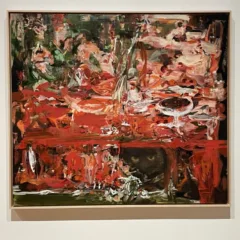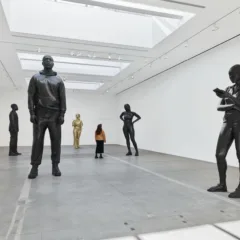(Andrea reviews a new exhibition showcasing Surrealist paintings and art objects. — the Artblog editors)
The Surrealists: Works from the Collection, on view at the Philadelphia Museum of Art (PMA) Perelman Building through March 2, 2014, is an excellent use of the museum’s permanent collection. It includes prints, photographs, books, magazines, and furniture, but the bulk of the work consists of paintings, which offer a particularly interesting survey of the varied and sometimes experimental paintwork of many Surrealists.
The exhibition takes a strict interpretation of Surrealism as a movement by a group of artists in Paris and in exile during WWII, from the 1920s-1940s, who formed a circle around writer Andre Breton. The movement introduced an interest in unconscious and irrational thinking in pictorial art that long outlasted its originators.
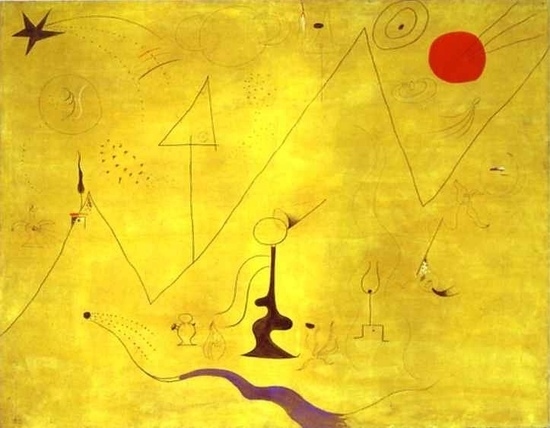
At the entrance, Dorothea Tanning’s eroticized couch/sculpture–the sexiest use of wool tweed I know–is surrounded by an ensemble including a decorated screen by Eugene Berman, a standing lamp by Diego Giacometti, and Thomas Chimes’ portrait of the writer Guillaume Apollinaire. This introduces both the Surrealists’ debt to the late 19th-century poet and playwright, and their interest in the decorative as well as the traditional fine arts. Salvador Dali’s well-known “Mae West Lips Sofa” (1937) was just one of many decorative objects commissioned by British patron Edward James, and several famous Surrealist exhibitions are renowned for creating a Gesamtkunstwerk of the artworks within elaborate settings.
An emphasis on Miro
Pride of place in the first gallery is given to Miro’s painting, “The Hermitage” (1924), above, one of an absolutely outstanding collection of Miro’s paintings of the 1920s in the PMA’s collection–all of them in splendid condition. This was a period when the artist was particularly experimental in his techniques. He used not only paint (and likely aqueous as well as oil), but also crayon and pencil for “The Hermitage”. With another painting of the same date and a similar yellow background, “Head of a Catalan Peasant,” at the National Gallery of Art, D.C., he poked a series of small holes in the canvas–25 years before Lucio Fontana would pierce and slash his canvases.
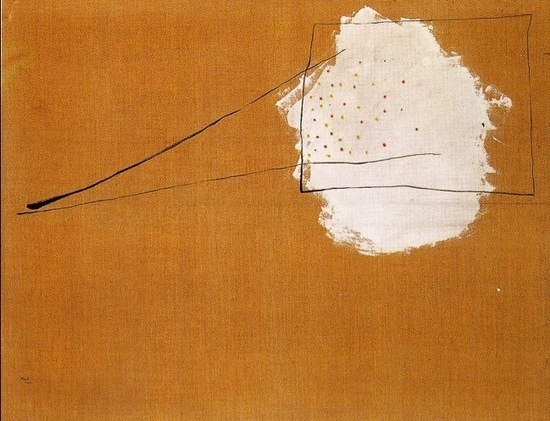
Miro also used hand-prints, painted on copper plates and sandpaper, and left un-primed canvas visible as part of his compositions. One of my very favorites, above and also in the exhibition, is “Untitled Painting” of 1927; Miro’s schematic of the relationship between vision and painting; the background is raw canvas, neither primed nor painted. Miro went one step further than Cezanne, and following him, Matisse, in treating a canvas support like a large sheet of paper.
Unusual approaches to texture
Other examples of interesting paint application include Max Ernst’s dragging a palette knife over canvas placed on top of a textured object (a sort of rubbing he termed grattage; both Ernst and Esteban Francis apply paint of different texture to different objects, to give the impression of collage); scribbled sgraffito and other unconventional paintwork by Enrico Donati; and a painting by Charles Seliger, whose technique I can’t quite figure out–the paint resembles enamel, and it might have been applied with stencils.
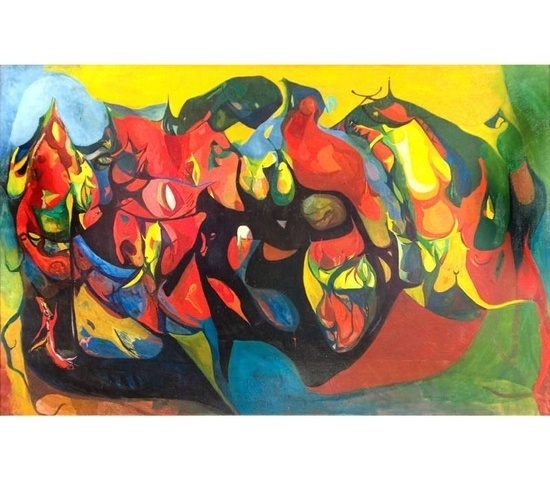
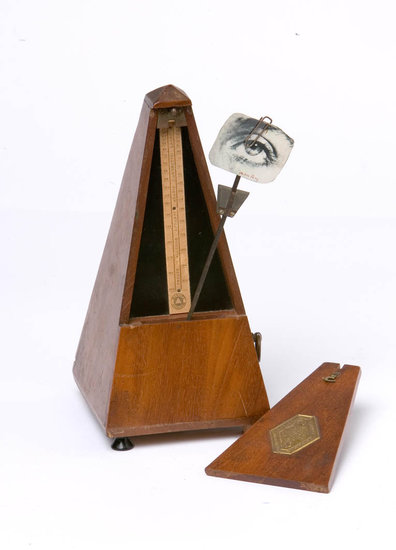
The exhibition includes significant works by two Surrealists from Philadelphia, Man Ray and Leon Kelly, and very good paintings by Matta, de Chirico, and Dali, as well as three works on paper by the only truly Surrealist architect, Frederick Kiesler. His enormous (94″ x 55.5″) graphite drawing of Marcel Duchamp, done on two assembled pieces of paper, looks surprisingly contemporary. Among the group of photographs is George Platt Lynes’ 1938 double-exposed portrait of the comic, Gracie Allen, commissioned by Harper’s Bazaar. It’s a reminder that by the late ’30s, the commercial world had happily embraced Surrealism, despite its self-proclaimed stance of transgression.
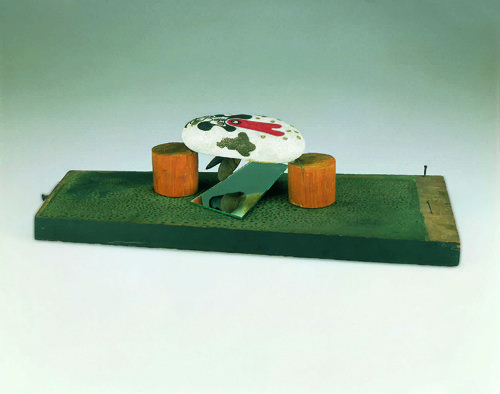
I’ve looked at Miro’s “Object” (1932) for years, but only truly saw it here. The small assemblage of a painted rock held on two wooden supports above a mirror revealed itself to be an abstracted, yet clear representation of a risque device for looking up a woman’s skirt. The rock bears a female form, which I never made out before, and the mirror below reflects an open oyster shell, indicating her pudenda. The ability to return many times and discover new ideas about artworks is only offered by permanent collections, and I’m grateful that the PMA is giving its public such a good opportunity to renew its knowledge of the museum’s Surrealist collection.
The Surrealists: Works from the Collection is on view at the Philadelphia Museum of Art until March 2, 2014.



